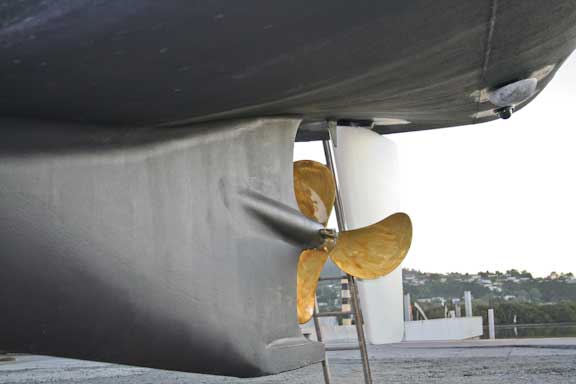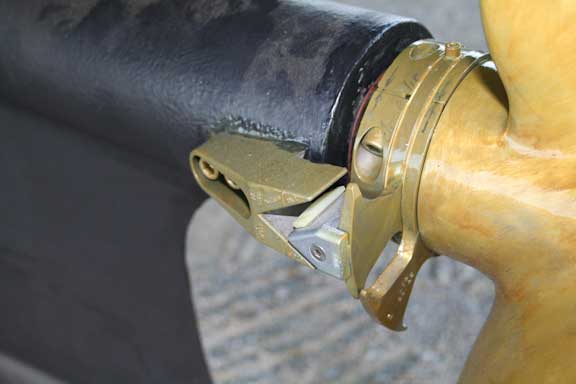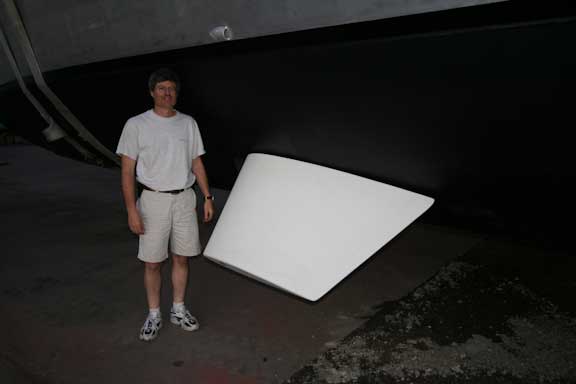
Although we have shown you the fins in the past this is the first chance we have had to show them in an uncluttered environment. The rudder is enormous by normal standards and in close proximity to the propeller. This offers numerous benefits:
- Better heavy weather steering.
- Close quarter maneuvering control.
- Enhanced control in reverse.

We have talked about the importance of the prop skeg shape and the flow of water around it to the prop. This water view will give you a feel for the streamlined flow at the back end, and just how little interference there is from the propeller skeg.

While we are here, a detail of the Spurs Line Cutter fitted to the prop shaft.

Finally, one of the stabilizer fins with a handsome boat builder for scale.
Posted by Steve Dashew (March 19, 2010)

March 23rd, 2010 at 5:55 pm
Hi Steve & Linda:
Congrats on a beautiful launch !
How did you deal with the “dissimilar metals” problem shown in the Spurs Line Cutter photo (keeper secured to the shaft log) ?
September 5th, 2012 at 4:08 pm
Hi Steve and Linda. I have read more or less all your publications and enjoy them a lot and try to work in a lot of the knowledge and experience into a future project.
I know you are big supporters of spade rudders, but now that i see your fins and twin engine installations i wonder why you dont extend the fin to also support the rudder? Couldn’t you still use the same rudder and have more or less the same performance with a much more protected prop and rudder? I am sure you have considered this, and would very much appreciate if you could explain the benefits of not having that extension of the fin.
Thanks in advance
Erik
September 5th, 2012 at 8:42 pm
Think about the connection between the prop skeg and rudder in the context of a severe grounding, with the center of that “protection bar” banging on a rock, taking half the boat’s displacement. When the bar bends it will jam both propeller and rudder. If you make the rudder strong enough to begin with, and have the correct leading edge angle, and relationship to the prop skeg, then hanging up on fish nets and debris damage will be minimized. We think the latter approach is the most conservative.